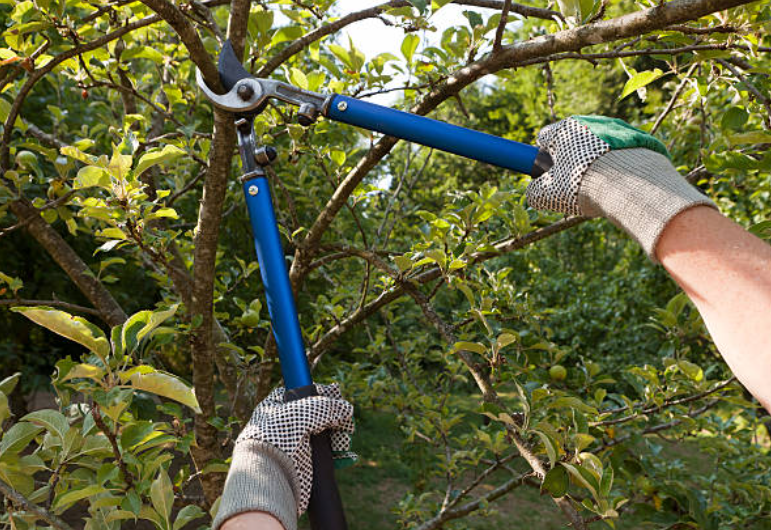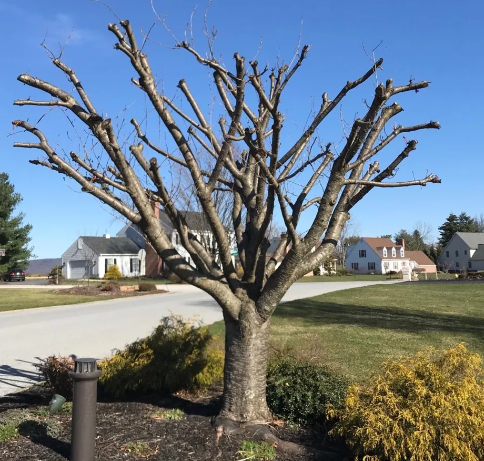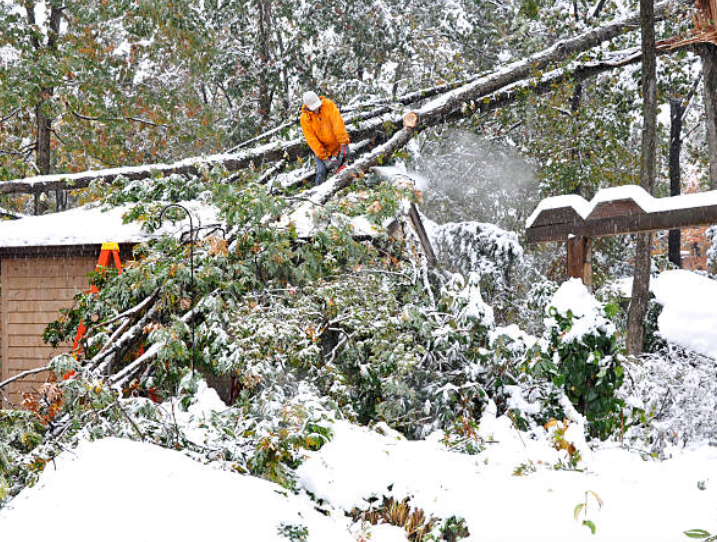Tips for Replanting New Trees after Tree Removal
Planting trees is an invaluable way to enhance our surroundings and preserve environmental health, but any time a tree is removed it must be replaced carefully or the space left will become increasingly empty and visually dismal. Without replacing a tree in the original area, it leaves a void that should be addressed quickly to regain the original look of when the previous tree was still standing.
Replanting trees is not simply for aesthetics, it is an investment for future growth. Understanding why a tree was removed is also key: could be disease, structural issues or safety concerns. Replanting helps restore lost benefits such as oxygen production, shade provision and habitat creation for wildlife.
Selecting the perfect tree species is like selecting a long-term houseguest, It needs to fit seamlessly. Considerations such as soil type, sunlight exposure and water availability are important when making this decision. Native species tend to thrive more readily, requiring less maintenance while providing better resilience against local pests and diseases.
Replacing a tree requires more than simply plonking down another sapling; it requires carefully considering all aspects of its establishment to ensure its success. Proper planting techniques, timing and ongoing care play an integral part in its survival. By taking into account these aspects during tree removal projects homeowners can turn them into opportunities to have positive environmental impact. By considering all factors properly before taking any actions to remove their trees they can make sure their replacement tree thrives for years afterward.
Inspecting the Site
Before planting trees, it's essential to conduct an in-depth site analysis to ensure the new tree's successful growth. This step involves carefully considering many different factors and taking note of any unique considerations which might impact its success.
Start by inspecting the soil conditions. Soil is essential in providing essential nutrients and support to a tree's roots, providing essential nourishment for its development and support. Check its texture, drainage capacity and pH levels, some trees prefer well-draining soils while others flourish in more moisture-retaining ground conditions.
Sunlight exposure is also essential. Watch how the light falls on your planting area throughout the day; different trees thrive under full sunlight, while some prefer partial or full shade. Knowing these patterns allows you to select tree species which match available light conditions.
Consider how water drains through the area. Trees vary greatly when it comes to their need for moisture; some prefer moist soil while others can withstand drier conditions. Understand how rainwater flows throughout and accumulates or drains away during stormy periods, and take appropriate action accordingly.
Understanding why the previous tree was cut down offers invaluable insight. Was it for reasons such as disease, poor growth, or safety concerns? Understanding these details helps prevent similar issues with new plantings while providing an opportunity to address any underlying issues which led to its demise in the first place.
Identification of potential obstacles in the planting area is critical to ensure an easy planting experience and long-term tree health. Taking measures to address nearby structures, utilities or invasive plants that might impede tree development early will result in smoother planting processes and greater prospects for its future success.
By conducting a detailed site assessment that includes soil conditions, sunlight exposure, water drainage needs, potential challenges associated with tree removal and selection decisions for new trees, homeowners can make informed choices for tree selection and ensure an optimum environment for their development.

Selecting the Suitable Trees for Central Texas
Finding an appropriate tree species in Central Texas involves considering climate, soil conditions and environmental constraints when making this choice. Central Texas' climate features scorching summer temperatures accompanied by intense soil-drying seasons - so when selecting trees to add to their garden they must thrive against all odds. Central Texas boasts hot summer temperatures but often receives rainfall late in the season which brings challenges of its own when selecting appropriate species to grow there. Tree species that show resilience against drought conditions must be chosen.
- Select Native and Well-Adapted Species: For optimal success in Central Texas, opt for native species like Texas Red Oak, Mexican Plum or Cedar Elm trees which have evolved to withstand its climate - these will likely thrive more successfully!
- Drought Resistance and Water Efficiency: With unpredictable rainfall patterns throughout Central Texas, choosing trees with high drought resistance and water efficiency are of vital importance. Specific species like Texas Mountain Laurels, Texas Ash or Desert Willow trees possess adaptations which enable them to conserve water more effectively - ideal choices for this region.
- Soil and pH Requirements: Central Texas soil can range from sandy to clay-like composition, and trees like Texas Persimmon or Live Oak can tolerate various soil types. Therefore, checking their preferred pH levels ensures it fits within local conditions.
- Environmental Requirements: Take note of your tree's environmental requirements, such as sunlight needs and space requirements for growth. Some trees, like Texas Redbud, thrive best under partial shade conditions while others such as Texas Persimmon prefer full sun exposure - understanding these preferences helps ensure optimal placement.
- Disease Resistant Tree Species: Select trees native to Central Texas or well adapted for local conditions which have natural resistance against prevalent local diseases, like Lacey Oak which has natural protection from oak wilt, which affects oak trees in Central Texas. By doing this you will ensure maximum resilience against such issues as oak wilt.
Homeowners in Central Texas can play an integral role in contributing to its ecosystem while simultaneously contributing to tree health and longevity. Consulting local nurseries or arborists for advice about suitable species is highly advised.
Timing and Season for Tree Planting in Central Texas
Timing plays a critical role in establishing trees successfully in Central Texas. With its varied climate patterns, understanding when is best to plant is critical to ensure its success and ensure maximum sustainability of its long-term survival.
- Preferred Planting Seasons: Central Texas offers ideal planting seasons for tree planting - fall (late September through November) and spring (preferably between late February and April) are generally the optimal times. Fall planting allows roots to establish before dormancy sets in, while spring planting allows the trees time to acclimate before intense summer heat sets in.
- Avoid Extreme Weather: Central Texas experiences high temperatures and occasional drought conditions during summer planting season, creating stress for newly planted trees that need time to settle in their roots and settle in without experiencing transplant shock. By avoiding extreme weather conditions during planting sessions, transplant shock can be avoided and root establishment improved more quickly.
- Keep Local Climate Variations in Mind: While fall and spring tend to be the optimal times for planting success in Central Texas, local variations should always be taken into account. Higher elevations might experience different temperature patterns compared with lower-lying areas; additionally microclimates within urban environments could alter planting success rates significantly.
- Soil Moisture and Temperature: Carefully consider soil moisture and temperature before planting. Additionally, avoid planting during periods of excess soil moisture or frozen ground as this could hinder root development and establishment.
- Checking Weather Forecasts: Before planning the planting, keep an eye on weather forecasts to identify periods with moderate temperatures and anticipated precipitation that will allow your tree to enter its initial growth phase more effectively. By planning tree planting according to Central Texas seasonal calendar, planting can become even simpler!
As residents can take into account local weather and soil conditions when planting trees in Central Texas, homeowners can maximize the chances of successful tree establishment and help the newly planted ones adapt better to the region's specific environment. Following these guidelines will give new plantings the best start possible towards healthy growth and resilience, the aim being that everyone should benefit from having healthy trees as part of their landscapes.
Proper Planting Techniques in Central Texas
Installing trees may seem easy, but using proper techniques for their long-term health and growth is crucial to ensure its long-term viability and growth. This is particularly relevant when planting in urban environments where their roots may reach out into neighboring properties and become exposed.
- Dig the Appropriate Hole: For optimal success when planting trees in Central Texas' unique environmental conditions, ensure the hole is large enough to accommodate their roots without overcrowding them. In general, soil conditions in this region vary, so aim for at least a hole twice the width but no deeper than twice its depth to allow room for expansion of root systems and prevent your tree from becoming root bound over time.
- Proper Root Management: Prior to planting, gently untangle any tangled or circling roots on the exterior of the root ball and loosen any that have become tangled over time. For container-grown trees, score the sides of the root ball to encourage outward root growth and avoid leaving roots exposed for too long in air.
- Align the Tree at an Appropriate Depth: For optimal root development in Central Texas soil conditions with shallow or rocky conditions, make sure the tree isn't planted too deeply as this could hinder root development.
- Mulching to Retain Moisture: Spread an organic mulch layer around a tree but keep it at least six inches from its trunk. Mulch helps retain moisture, regulate soil temperatures, and suppress weed growth - an essential tool in Central Texas with its constantly varying weather conditions.
- Watering practices: After planting, provide enough water for the tree's roots to become established in its new environment. In Central Texas where drought can occur, deep and slow watering are especially essential; use slow and deep pouring methods in order to promote root development. Once established, gradually decrease frequency so the tree can adjust itself to local conditions.
By following these tailored planting techniques for Central Texas' specific environment, homeowners can ensure their newly planted trees get off to an excellent start and can flourish within its climate and soil conditions.
Watering and Maintenance for Tree Growth in Central Texas
Once trees establish roots in Central Texas soil, diligent watering and ongoing maintenance is critical to their long-term health and survival in its ever-changing climate. Think of your tree like a new guest in your home: It requires care and regular watering to adjust comfortably. Begin with an initial generous watering after planting to help the roots establish themselves and then establish a regular schedule of watering as rainstorms can vary in intensity throughout Central Texas.
Watering at least every other week for the first few years is essential to successfully growing any tree. Do not rely on rainwater alone; rather, water deeply but occasionally to encourage roots to penetrate further into the soil in search of moisture. As your tree matures and requires less frequent irrigation sessions, adjust its watering regimen accordingly and gradually decrease frequency until finally stopping completely as your tree matures and needs less assistance to thrive.
Keep an eye on soil moisture levels during prolonged dry spells; otherwise your tree could show signs of distress by wilting or dropping leaves if more water is required. Regular maintenance visits will further support its health. Regular inspection is key for healthy tree growth. Always remain alert for pests, diseases or nutritional deficiencies; in Central Texas where temperatures can range between hot summer days and freezes, make sure that you conduct these checks during extremes in weather. Mulching may help to mitigate problems when weather extremes hit - use mulching as an additional preventative measure!
Environmental conditions at the base can help regulate soil temperature and retain moisture levels, contributing to overall tree health. Applying fertilizers appropriately provides essential nutrients needed for growth; however, overfertilizing is dangerous to trees. Consult local tree service experts or arborists to determine the optimal fertilization schedule and type for Central Texas trees. Nurturing Central Texas trees takes dedication but eventually pays dividends in terms of reduced stress levels, adequate watering needs, and overall wellbeing. By consulting gardening experts or arborists for advice regarding fertilization schedule and type for Central Texas trees. Provided with proper maintenance, homeowners can help their trees adapt and withstand this ever-evolving environment.
Protecting Newly Planted Trees in Central Texas
Shielding newly planted trees from external threats ensures their successful establishment and growth in Central Texas' diverse environment.
- Wildlife Protection: Central Texas is home to various animals that pose threats to young trees, such as deer or rodent damage. Installing tree guards or wrapping the trunk with protective materials helps safeguard young trees against being nibbled by animals like deer.
- Staking for Support: In windy environments or during initial growth stages, trees may require support staking for stability. Flexible ties should be used in order to avoid damaging their bark while providing needed support until their root system develops stronger roots.
- Extreme Weather Safeguards: Central Texas experiences a range of climates, from intense heat to occasional freezes. During frosty conditions, protect trees with cloth or burlap to protect from frost damage and shade them during scorching summer heat with temporary screens or cloth to protect from sunburn.
By protecting young trees against wildlife and providing support through staking and weather protection measures, homeowners can increase the odds that these young trees thrive in Central Texas' ever-evolving conditions. Such steps provide vital tools to ensuring their success over time.
Conclusion
Central Texas boasts an expansive landscape filled with vibrant trees that add beauty and improve ecosystem health. To this end, Central Texas stands as an impressive showcase of urban regeneration. Planting trees after removal entails more than simply filling an empty spot; it represents an effort to help sustain our planet, one sapling at a time. By carefully considering your site and choosing an appropriate species of tree before timing its installation, you will create lasting change to our environment and restore balance in its ecosystem.
Employing proper techniques and offering ongoing care, homeowners can transform tree removals into opportunities for growth. Every tree that emerges becomes an example of resilience in Central Texas' climate and terrain - becoming living monuments of resilience which provide support to their surrounding community as they take root and blossom into strong supports for life.
By following these practices and recommendations, homeowners can foster a healthier ecosystem that provides shade, oxygen, and wildlife sanctuary. Through using these tips and practices, homeowners plant seeds of growth for an environmentally-friendly future; each tree planted after removal stands tall as proof. Careful management will lead to a thriving environment for generations to come.
You might also like

Book a Service Today
We will get back to you as soon as possible
Please try again later


